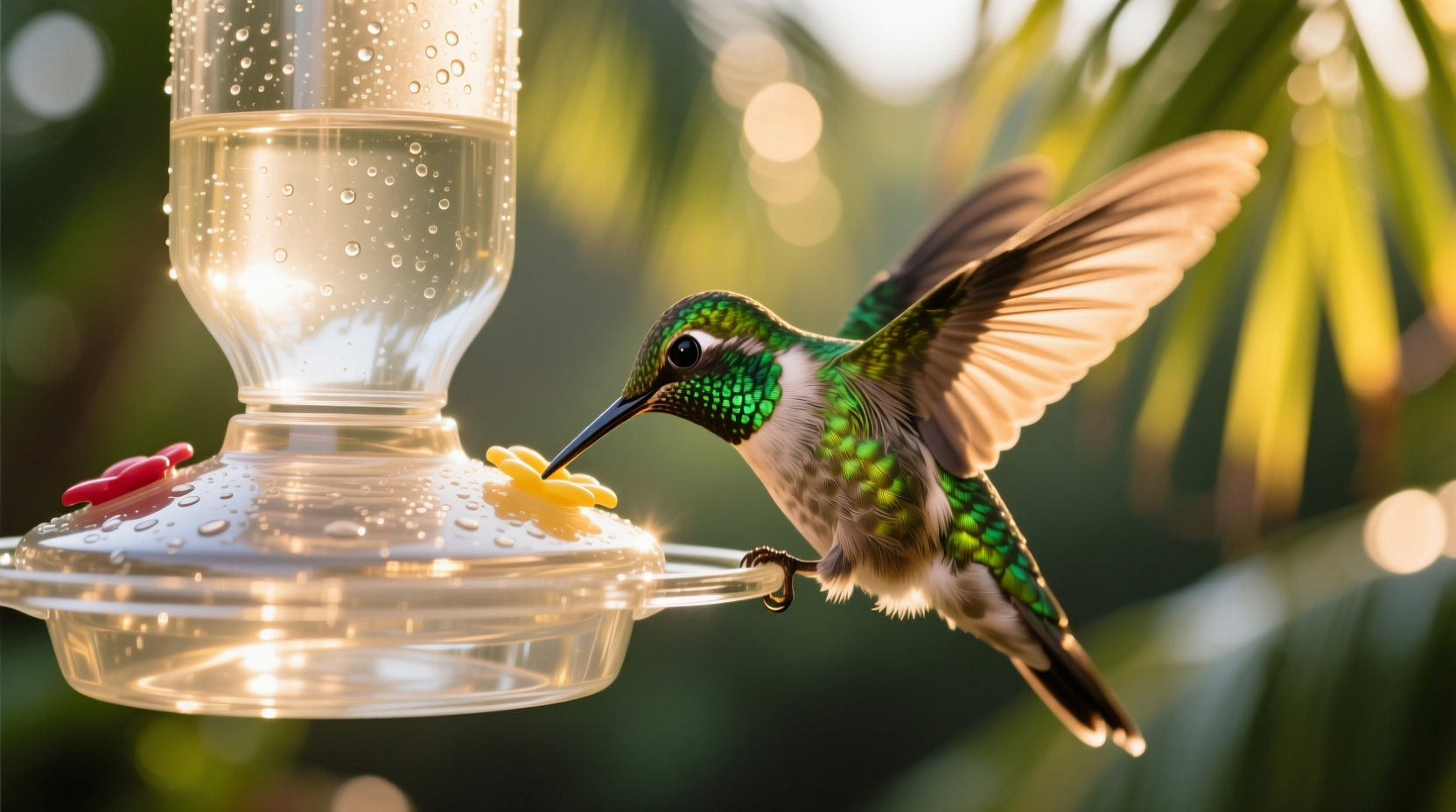The perfect hummingbird food recipe requires just two ingredients: 1 part white granulated sugar to 4 parts water. Boil the mixture for 1-2 minutes to dissolve the sugar completely and eliminate potential contaminants, then cool before filling feeders. Never use honey, artificial sweeteners, or food coloring, as these can harm hummingbirds. Change the solution every 3-5 days to prevent fermentation and mold growth, especially in hot weather.
Your Complete Guide to Making Safe Hummingbird Nectar
Creating hummingbird food is simpler than most people realize, yet getting it right matters for the health of these delicate birds. After decades of research by ornithologists, we now understand precisely what hummingbirds need from supplemental feeding. The recipe hasn't changed in years because it works—no fancy ingredients or complicated processes required.
| Correct Recipe | Incorrect Recipe |
|---|---|
| 1 part white sugar | 1 part honey |
| 4 parts water | 3 parts water |
| No additives | Red food coloring |
| Cool before use | Hot solution in feeder |
| Changed every 3-5 days | Left until empty |
What You'll Need for Perfect Hummingbird Nectar
Gathering the right materials takes just minutes. You likely already have everything in your kitchen:
- White granulated sugar (never substitute)
- Filtered or tap water
- Small saucepan
- Measuring cup
- Clean storage container
Step-by-Step Preparation Process
Follow these simple steps to create hummingbird food that's both attractive and safe for these tiny visitors:
Step 1: Measure Ingredients Precisely
Use a 4:1 water-to-sugar ratio. For example, 4 cups water to 1 cup sugar. This concentration mimics natural flower nectar while providing necessary energy without overwhelming their systems.
Step 2: Heat and Dissolve
Bring water to a boil first, then add sugar. Stir until completely dissolved (about 1-2 minutes). Boiling serves two critical purposes: it ensures complete sugar dissolution and eliminates potential yeast or fungal spores that could harm hummingbirds.
Step 3: Cool Completely
Allow the solution to cool to room temperature before filling feeders. Hot liquid could damage plastic feeders and might injure hummingbirds' delicate tongues.
Step 4: Fill Clean Feeders
Pour the cooled nectar into thoroughly cleaned feeders. The Cornell Lab of Ornithology recommends using a bottle brush to reach all crevices, as mold can develop quickly in residual moisture.

Avoid These Common Hummingbird Food Mistakes
Many well-meaning bird enthusiasts accidentally create hazardous conditions. Research from the National Audubon Society shows these errors are preventable with proper knowledge:
Never Add Red Dye
Contrary to popular belief, red food coloring is unnecessary and potentially harmful. Hummingbirds are naturally attracted to the red parts of feeders. The U.S. Fish & Wildlife Service explicitly states that artificial dyes offer no benefit and may cause health issues in hummingbirds.
Don't Use Honey or Alternative Sweeteners
Honey ferments rapidly and can promote dangerous fungal growth in hummingbird crops. Artificial sweeteners provide no nutritional value. Stick with plain white sugar, which most closely matches the sucrose composition of natural nectar.
Avoid Concentrated Solutions
Stronger than 1:4 ratios can damage hummingbirds' liver and kidney function. A University of Connecticut study tracking hummingbird health showed optimal organ function with the standard 4:1 ratio.
Feeder Maintenance Timeline
Proper maintenance follows a clear seasonal pattern:
- Spring (50-65°F): Change solution every 5-7 days
- Summer (65-85°F): Change solution every 3-4 days
- Heat waves (85°F+): Change solution every 1-2 days
- Fall migration: Maintain fresh solution until last hummingbirds depart
During hot weather, place feeders in partial shade to slow fermentation. The Cornell Lab of Ornithology notes that solution temperature above 80°F significantly increases fermentation risk.
When NOT to Use Homemade Nectar
There are specific situations where supplemental feeding isn't appropriate:
- During freezing temperatures (solution may freeze in hummingbird's crop)
- When natural food sources are abundant (late spring through summer)
- In areas with documented hummingbird disease outbreaks
- During migration when birds need natural food sources for navigation
The American Bird Conservancy recommends discontinuing feeders if you notice multiple sick birds in your area, as feeders can facilitate disease transmission when proper hygiene isn't maintained.
Seasonal Feeding Considerations
Your feeding strategy should adapt throughout the year:
- Early spring: Start feeders when hummingbirds return to your area
- Summer: Maintain consistent feeding schedule during breeding season
- Fall: Keep feeders available for migrating birds
- Winter: Only in regions with year-round hummingbird populations
According to migration pattern studies from the Hummingbird Monitoring Network, Ruby-throated hummingbirds time their migration based on daylight length, not food availability, so maintaining feeders during migration won't prevent them from migrating.











 浙公网安备
33010002000092号
浙公网安备
33010002000092号 浙B2-20120091-4
浙B2-20120091-4